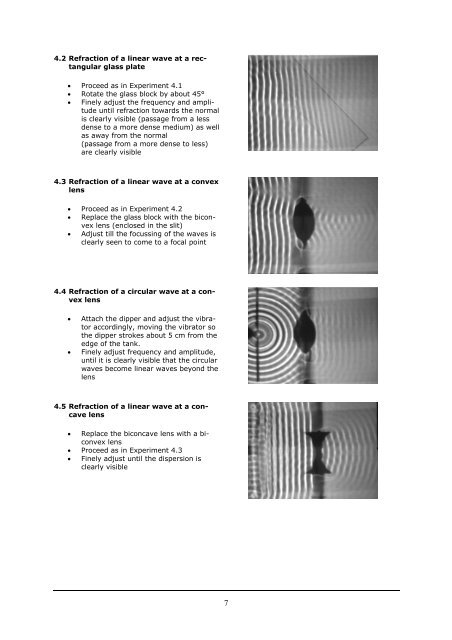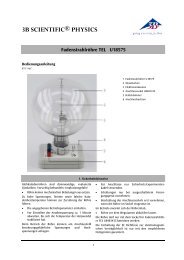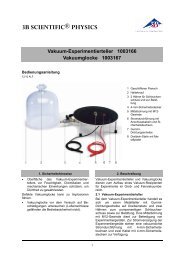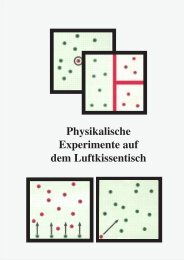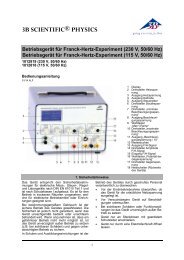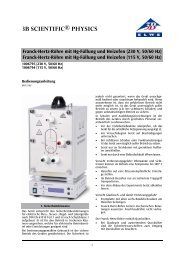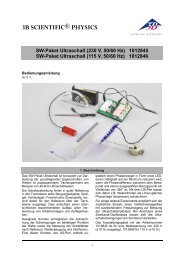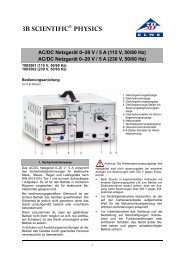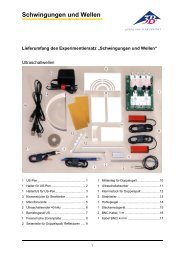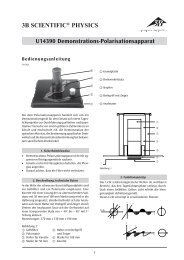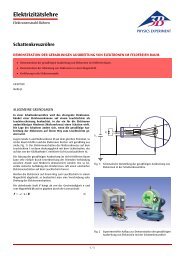3B SCIENTIFIC® PHYSICS Wellenwanne U21910
3B SCIENTIFIC® PHYSICS Wellenwanne U21910
3B SCIENTIFIC® PHYSICS Wellenwanne U21910
You also want an ePaper? Increase the reach of your titles
YUMPU automatically turns print PDFs into web optimized ePapers that Google loves.
4.2 Refraction of a linear wave at a rectangular<br />
glass plate<br />
• Proceed as in Experiment 4.1<br />
• Rotate the glass block by about 45°<br />
• Finely adjust the frequency and amplitude<br />
until refraction towards the normal<br />
is clearly visible (passage from a less<br />
dense to a more dense medium) as well<br />
as away from the normal<br />
(passage from a more dense to less)<br />
are clearly visible<br />
4.3 Refraction of a linear wave at a convex<br />
lens<br />
• Proceed as in Experiment 4.2<br />
• Replace the glass block with the biconvex<br />
lens (enclosed in the slit)<br />
• Adjust till the focussing of the waves is<br />
clearly seen to come to a focal point<br />
4.4 Refraction of a circular wave at a convex<br />
lens<br />
• Attach the dipper and adjust the vibrator<br />
accordingly, moving the vibrator so<br />
the dipper strokes about 5 cm from the<br />
edge of the tank.<br />
• Finely adjust frequency and amplitude,<br />
until it is clearly visible that the circular<br />
waves become linear waves beyond the<br />
lens<br />
4.5 Refraction of a linear wave at a concave<br />
lens<br />
• Replace the biconcave lens with a biconvex<br />
lens<br />
• Proceed as in Experiment 4.3<br />
• Finely adjust until the dispersion is<br />
clearly visible<br />
7


